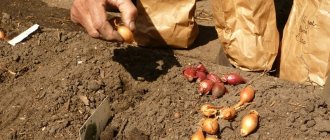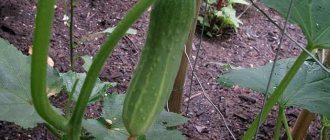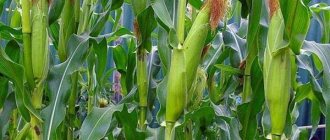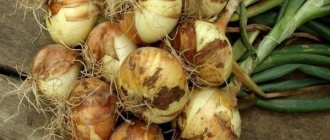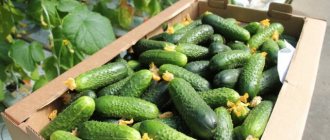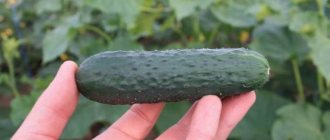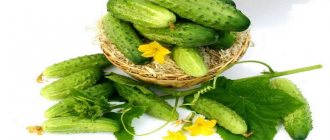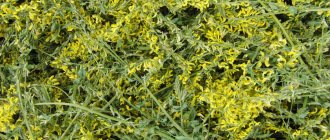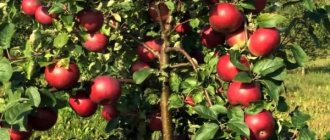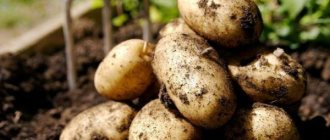Corn for silage growing features
To obtain the most productive mass, corn silage is made by following certain technological techniques. But before you start making it, you need to get acquainted with the rules of growing the crop.
Cultivation of corn for silage differs from grain technology. The similarity is that the same grain varieties of corn are selected for silage and the same sowing dates are observed.
Before growing corn for silage, you need to know its biological characteristics. Corn is an annual heat-loving cereal crop with a well-developed stem, leaves and roots. At first, the roots grow in the upper, heated layers of the soil, gradually deepening by 1–2 meters.
The stem is 7 cm thick; one plant can have up to 25 leaves. The stem is divided into nodes, the number of which does not increase with plant growth. It can grow up to 5 meters in height by lengthening the space between the nodes. On the upper part there is a male inflorescence - a panicle. Stepchildren are formed on the lower nodes. If corn is grown for grain, they should be removed.
Corn seeds begin to germinate at a temperature of +10 degrees. The warmer it gets outside, the more actively the crop grows. At a temperature of +15 degrees, the first shoots appear after 8 days. The culture can withstand frosts down to -3 degrees, lack of moisture and heat, but only during the germination period. If such unfavorable factors appear during flowering, the yield may be significantly reduced.
It is very important to determine the correct timing of harvesting corn silage, maintaining the dry matter ratio and stage of maturation. Dry matter content is a reliable criterion for determining the quality of corn silage. Harvesting is best started when the dry matter content is 28–30%.
Stages of maturity
The energy value of silage depends on the degree of maturity of the crop. There are 3 main stages of cob ripening:
- Dairy. When the plant has formed light yellow grains, when pressed they release milky white juice. The taste of corn is sweet, the proportion of dry matter (DM) does not exceed 35%. Corn becomes milky ripening on days 17-20 from the moment the flower is fertilized.
- Wax. The stage of plant maturity when the grains harden and darken. The inner softness is still preserved. The proportion of dry matter increases to 45-50%. Wax maturity occurs approximately 25 days after pollination of the plant.
- Biological. The full stage of ripening, when pressing on the grains makes it impossible to crush them. They become hard, tough, and acquire a rich color. The stage begins 1.5-2 months after pollination. The dry matter content in the product reaches 55%. And if a black dot is visible at the tip of the grain, which is easy to separate from the cob, then the SV reaches its maximum value.
On a note! The dot at the base of the grain indicates that the growing season has ended. In rainy summers, the dot darkens earlier than expected.
Biologically ripe corn
When the plant has reached full ripeness, the cobs are harvested for grain; milky-wax or waxy ripeness is required for silage. At the stage of milky ripeness, corn is harvested for green fodder.
Crop rotation
With good care, the yield of corn silage per 1 hectare can be 50–60 tons. If corn is grown for feed, then for the rapid development of green mass, you need to water the crop as often as possible. When using special irrigation systems, the yield can be increased to 80–100 tons per hectare.
Silage corn is used as feed for cattle, rabbits, and poultry due to its high feed value. The beneficial properties of the product include:
- the functioning of the digestive organs in animals is normalized;
- muscle mass increases;
- animal blood parameters improve;
- the amount of milk production in cows increases;
- contains many vitamins, amino acids, organic fats.
To obtain a high-quality and rich harvest, you also need to observe crop rotation. It is advisable to plant after cereals or legumes, perennial grasses. The best predecessors are vegetables such as potatoes, cucumbers, tomatoes, and beans. Every 3–4 years it is recommended to change the planting location of the crop.
Uses of corn
This crop is grown in fields mainly as fodder. Corn grain, as well as, for example, silage from its stalks, can be fed to any farm animal. Owners of farms specializing in raising pigs, cattle, rabbits, and poultry consider its high nutritional value to be the main advantage of corn feed. In this regard, corn is superior to many other cereal crops.
The grain of this plant is also widely used in the food industry. It is used in the preparation of starch, flour, for baking confectionery, canning, etc.
The soil
For sowing corn for silage, chernozem, loamy, sandy loam and sandy soil with normal acidity is best suited. To cultivate corn, you need to carefully prepare the soil.
If the soil is prone to waterlogging and high acidity, then cultivating the crop will not work. It is recommended to lime acidic soils 1–2 years before sowing.
Corn needs good aeration, especially during the germination stage. The embryos absorb a lot of oxygen, and a good harvest will only occur if there is about 20% oxygen in the soil air.
In the fall, the area is dug up to a depth of 25–30 cm. When weeds appear or after rains, harrowing is carried out. At the same time, you can add organic fertilizers, such as manure. In the spring, harrowing is carried out to a depth of 5 cm, after which the soil is cultivated to a depth of 8 cm.
See also
What is the average yield from 1 hectare of corn?Read
The best predecessors for corn for silage are winter and spring grain crops, buckwheat, potatoes, and legumes. It is not recommended to plant after beets, millet and sunflower, as these crops lead to a deficiency of microelements in the soil and a lack of moisture.
Further storage and use
For corn ensiling, trenches and mound storage areas are used . Before laying the feed, the bottom of the structure is lined with straw. The green mass is loaded into a trench or onto a mound, mixed, leveled and compacted using a bulldozer. The thickness of the daily laid layer must be at least 0.7 m. Filling the structures with green mass lasts 5-7 days. The height of the silage layer in the middle part is 5 m, after settling during storage - at least 4 m.
After laying, the storage is hermetically sealed . Most often, the green mass is covered with a polymer film, covered with a layer of earth 5-8 cm high and straw 50-60 cm thick is laid. Silage ripening lasts 15-25 days.
Silage is taken by vertical cuts , which prevents contact with air and precipitation. Storing succulent feed in heaps in the barnyard is unacceptable. Within a day, due to spoilage, it cannot be fed to animals.
Corn varieties and hybrids
To grow corn for silage, you do not need to wait until the grain is completely ripe. Therefore, it is better to choose late-ripening varieties, which accumulate many nutrients upon reaching milky-waxy ripeness. To increase the size of the crop, you can sow early and mid-ripening varieties mixed together with late-ripening varieties.
The most popular varieties of corn grown for silage include: Sterling, Partizanka, Osetinskaya, Dnepropetrovsky, Adavey, Dubrava, Kalina. All these varieties have increased digestibility by animals, develop quickly and produce a rich harvest.
In order for the seeds of the selected variety to germinate well and the plant to have good immunity, they must be disinfected. For this purpose, seeds are treated with manganese.
Corn stover (stalks and leaves after decobs) of any variety are best ensiled at about 45% moisture content. In this state they soften, after which they are crushed into small pieces (1 cm). The straw can be dried in special drying units or spread out in a thin layer on level areas. Dry straw is used in granulated or briquetted form.
3. Height of laying and compaction work in the silo trench
The latest generation forage harvesters (600-700 hp, 10-12 rows) are technically capable of harvesting over 50 tons of dry matter or up to 3 hectares of corn silage per hour. It is also not a problem to ensure the required speed of delivery of this mass to the trench due to an increase in the number of vehicles. But our weak link will be the compaction process in the silo trench.
Well-compacted corn silage should have a bulk density of at least 220, and preferably over 250, kg of dry matter per cubic meter. Finely chopped stock (less than 10 mm) can be compacted using rolling equipment with additional weight (minimum weight 6-8 tons) and high tire pressure at a rate of 20-25 tons of dry matter per hour. This corresponds, depending on the yield, to 1.2-1.5 ha per hour. At the same time, you need to remember the low speed of the tamping equipment - 2.5-3 km/h.
The weight of the compacting equipment should be 1/3 – ¼ of the hourly productivity of the stacking height in tons of fresh mass. From this it quickly becomes clear that with a productivity above 1.2-1.5 hectares per hour, two silo trenches need to be laid in parallel, or, if the trench is large, several units of equipment must be involved in compaction at the same time.
Characteristics of silo trenches such as length, width, wall shape or drive-through capability can also influence whether compaction is good or bad. With the length of a silo trench up to 40 meters and the use of large machines, the fresh layer of mass is often too thick (more than 30-40 cm). And in order for two machines to work in parallel, the minimum width of the silo trench must be over 7 meters.
Sowing time
The fields begin to be sown only after the soil has warmed up to +12 degrees to a depth of 8 cm. If the soil is heavy and clayey, then the seeding depth should be about 4 cm. The timing falls approximately at the beginning of May.
After sowing, it is necessary to carry out harrowing. The second harrowing is carried out after 4–5 pairs of leaves have unfolded on the plant. More details on the technology of cultivating corn for silage can be found in the table.
| Types of jobs | Dates | Requirements |
| Autumn plowing | From late August to early October | Layers of earth are turned over, plant debris is removed from the site |
| First harrowing | First days of April | Loosening depth 4 cm |
| Second harrowing and cultivation | April | Cultivation depth 15 cm, weed removal, cultivation is carried out to a depth of 5 cm |
| Sowing | From May 5–10 | Seed preparation |
| Harrowing before emergence | A week after sowing | Loosening the top layer of soil |
| Harrowing by seedlings | On the 20th of May | Loosening and killing weeds |
| Treatment of beds from weeds and treatment with herbicides | As it grows | The treatment is carried out with drugs that are diluted according to the instructions. |
| Harvest | Mid August | Cutting and chopping the plant |
To get a large harvest of cobs and prevent problems from developing, you need to follow the basic rules of cultivating the crop. What is important is the density of sowing, compliance with crop rotation, soil composition and proper preparation, timing of sowing and harvesting, methods of controlling weeds, pests and diseases.
DN Full House
The domestic mid-late hybrid has a universal purpose; therefore, the crop in question is used both for obtaining green fodder and for growing for grain. In the latter case, the potential yield of the variety is 16 tons per hectare.
The hybrid is resistant to lodging and many diseases, including fusarium and smut, and is not affected by the corn moth. Thanks to these qualities, the crop can be grown in regions with strong winds and even in regions located on the sea coast. The height of the plant is between 3-3.2 meters, the cobs are large, up to 25 centimeters in length. Grain moisture content during harvesting is within 23-27%.
Density of sowing corn for silage
The density of corn depends on the ripeness group, variety and soil moisture. The norm for sowing corn for silage is a planting density of 55–100 kg per hectare of area. The density of plants in the garden for green mass in the garden is 6–8 plants per meter of land. In these cases, the ears are almost never set; only green mass is collected for feed. Most of the plants are in the shade, more moisture is retained in the soil - these are all the conditions necessary for growing plants for food.
Early varieties of corn can be sown thicker than late ripening varieties. The higher the plant stem stretches, the fewer plants should be sown per 1 square meter. m. An increase in the standing density of corn for silage by at least 10% leads to an average yield.
When sowing seeds in the fields, maintain a distance between rows of 65–70 cm. In the garden, they are sown mainly in a square-cluster method according to a 40x40 cm pattern.
See also
Basic and pre-sowing tillage after cornRead
Types of corn
There are only 8 varieties of this crop distinguished based on biological characteristics. However, only five of them are of economic importance:
- sweet corn;
- tooth-like;
- bursting;
- siliceous;
- starchy.
Sweet corn is used primarily for human food in boiled form. Also, grains of this variety are usually used to make canned food. Subsequently, such a product can be used, for example, in the preparation of salads.
The kernel of dent corn has a characteristic depression at the top. Its shape is wedge-shaped. That is, in appearance, such a grain resembles a horse’s tooth, which is where the name of the variety comes from. The features of such varieties are, first of all, a well-developed stem and high yield. Thanks to these characteristics, dent corn is quite popular in our country.
In the siliceous variety, the grain is flattened on the sides and has a rounded top. Most varieties and hybrids of this group are characterized by early ripening.
Popcorn is characterized primarily by its small grain size. It is not grown very often in Russia. The grain of this variety has a pointed top and bursts during heat treatment.
Starchy corn has a very soft kernel. Its distinctive feature is also its mealy endosperm. This variety is grown mainly for the subsequent processing of grain into starch, molasses and oil.
In addition to varieties, breeders have also developed corn hybrids. The yield of such plants can actually be very high. Hybrids have this feature due to heterosis.
Fertilizers
To get a good harvest of corn intended to feed herbivores, you need to apply fertilizers on time. Corn responds equally well to both mineral and organic fertilizers.
When growing corn for animal silage, the emphasis is on green mass development, so nitrogen is of great importance in the early stages of corn development. In case of its deficiency, the growth and development of the plant slows down. Calculate approximately 25 kg of nitrogen fertilizer per hectare. After 3–4 weeks, fertilization is repeated.
With a lack of potassium, the leaves become dark green, the growth of the green and root parts of the plant slows down, then the leaves begin to curl, turn yellow and dry out.
Throughout the growing season, corn needs phosphorus. The crop especially needs this microelement after germination, as well as during the flowering and grain formation phase. With its deficiency, the formation of grains in the cob slows down, the leaves become dark green with red-violet veins and gradually die off.
It is recommended to apply phosphorus and potassium fertilizers in the fall. Unlined manure is especially useful for corn silage. It is useful to apply nitrogen fertilizers between rows before sowing.
What is silo
Silage is a succulent feed made from fresh or dried green mass . This type of feed is obtained by fermentation, mainly lactic acid, under anaerobic (without oxygen) conditions.
Properly prepared silage has a fruity smell or the smell of pickled vegetables and a non-spreading consistency.
Important! Slime and mold in succulent feed are unacceptable.
Silage, like other succulent feeds, contains 60-80% moisture . But this is not just water, but a living solution containing vitamins and minerals, which has a general strengthening effect on the animal’s body.
Green mass enriches the diet of livestock and accounts for about 50% of the total nutritional value of feed. The use of the product in animal nutrition satisfies the following needs :
- normalizes the functioning of the digestive organs;
- accelerates weight gain during fattening;
- increases the amount of milk production.
Herbicides
Weeds cause a decrease in yield, the spread of pests and various diseases. Therefore, in addition to observing agrotechnical practices, the cultivation of corn cannot be done without timely weed control. The use of herbicides is considered an effective method.
Before the emergence of seedlings, herbicides such as Aurorex, Erodikan, Reglon are incorporated into the soil (consumption rate is about 8–10 l/ha). The surface of the earth can be treated with preparations such as Harnes, Roundup (consumption rate 3 l/ha).
If pre-emergence herbicides have not shown their effectiveness, use post-emergence preparations: Ballerina, Milady, Adengo, Dialen, Turbin, Desormont, Luvaram (consumption rate 2 l/ha). The preparation Cowboy 200 g/ha can be used.
Silage harvesting begins in August. When sowing 50 thousand seeds per hectare, about 55 centners of feed units per hectare and about 220 centners of green mass are obtained.
4.Closing the silo trench: prevent air from entering
Silage production is based on anaerobic lactic acid fermentation. Therefore, immediately after laying, the silage mass must be very carefully covered, first with a thin bottom film, and then with a dense main film, and compacted using special bags of gravel. In this case, it is advisable if, after the last delivery of the mass into the trench, the equipment continues compaction for at least 30-60 minutes.
After this, the trench is immediately covered with film. This is also recommended if the bookmark is paused for periods longer than 8 hours. Regardless of the type of film used, if laying is carried out in stationary structures, be sure to lay the film on the sides, along the entire length of the side walls. This prevents rainwater, and subsequently oxygen, from entering the silo, which again can lead to rotting of the feed. Sloping walls make this type of quality assurance easier.
Diseases and pests
If diseases or pests are detected on plants, the problem must be dealt with in a timely manner. This will prevent the massive spread of infection, which will save most of the harvest.
Among the pests most often attacked:
- wireworm (the larvae penetrate the stems, cobs and after a couple of weeks the grains turn black);
- meadow moth (larvae feed on young leaves of the plant);
- leaf cutworm (insects gnaw not only the entire green part of the plant, but also the grains);
- Swedish oat fly (insects eat young shoots).
The diseases that most often affect are powdery mildew, rust, and blister smut. Corn leaves turn pale, black dots and stripes may appear, dry out, and curl.
It is very important to properly treat the seeds before planting and carry out preventive treatments with insecticides. You can use drugs such as Force, Karate, Vantex.
To reduce the risk of disease development and pest infestation, it is necessary to follow the technology of cultivating corn for silage. It is imperative to monitor crop rotation, deeply cultivate the soil in the fall, treat the seeds, sow the seeds on time, and harvest.
Bereka DN
This variety was included in the register of grain crops in 2014. This is a mid-season plant, which differs from its analogues in its high resistance to diseases (dusty and blister smut). During the growing season, the plant in question is not affected by a pest such as the corn borer.
The crop in question is recommended for cultivation in the forest-steppe zone; it is mainly used to produce high-quality silage. The yield of green mass can reach up to 50 tons per hectare, the potential grain yield is 15 tons/ha. If there is enough fertilizer, the plant height reaches 3 meters. Ears measuring 23-25 centimeters are fixed at a low height relative to the soil level, which simplifies harvesting.
Harvesting corn for silage
In corn, there are 4 stages of grain development: grain formation (lasts two weeks from the beginning of fertilization), milk and milk-wax (these two stages last about 10–12 days), wax (about 15 days) and full maturity.
Harvesting corn for silage begins from the moment the grain reaches milky-waxy maturity. When pressing on the grain, a light liquid and a thick mass are released. At this stage, the grains contain an average of 46% moisture, the leaves 34%, and the stems 80%. Harvesting continues until the waxy ripeness phase is reached.
Mowing is carried out with special agricultural equipment (forage harvester) to a height of 12–15 cm. By observing the timing and rules of harvesting, you can obtain healthy and high-quality food for pets.
How to store the harvest?
The harvested crop must be properly stored to prevent spoilage and loss of nutrients. Here are the most popular ways to store grains, taking into account their purpose:
Industrial or feed corn grain should be stored in bulk in warehouses, bunkers or elevator silos. The height of the embankment can be determined by the capabilities of the storage room. It must be comfortable for normal maintenance of raw materials and quality control. Feed raw materials can also be stored in metal silo towers. In this case, you will need to constantly monitor the temperature of the raw materials.
Particular attention will have to be paid to the upper and lower layers of the embankment to prevent condensation from appearing in them. This often occurs when the temperature in the towers changes. Grain on the cob should be kept in a dry and well-ventilated area, the humidity in which is very low and does not exceed 15%
The optimal height of the cob mound is up to 1.5 m. Before storing them, you need to carefully sort them out, remove all the leaves and dry them to a moisture content of 13-14%. Keep grains in plastic containers, cardboard boxes or fabric bags. In the latter case, you need to ensure that the fabric is not saturated with moisture, otherwise the seeds will lose their ability to germinate. Grain in this form can be kept in an unheated room for up to 24 months. Its humidity should not exceed 13%. At home, corn can be stored in the refrigerator. First you need to clean it well, soak it in salted water and acidified with lemon juice, and then put it in bags and throw it in the refrigerator, but it will need to be consumed within 10 days. To store the cobs in the freezer all winter, you need to alternately dip them for 2-3 minutes in ice and hot boiled water, and then dry them and wrap them in cling film.
Harvesting corn involves a number of rules and features, depending on whether it is collected for silage or grain. The difference lies not only in the harvesting process, but also in the principles of determining the optimal timing of work and the units used.
Hybrid Eurostar
This is a universal variety with good yield indicators, which does not depend on the purpose of growing the crop: for grain or silage. Eurostpar corn perfectly resists such a popular disease as fusarium and has a high degree of moisture release. The yield of the variety is from 10 to 12 tons per hectare, the height of the stem is 2.8 meters, the level of attachment of the cob is 1.1 meters from the surface of the ground. In addition to resistance to fusarium, the hybrid is resistant to lodging and is not afraid of helminthosporium or smut.
